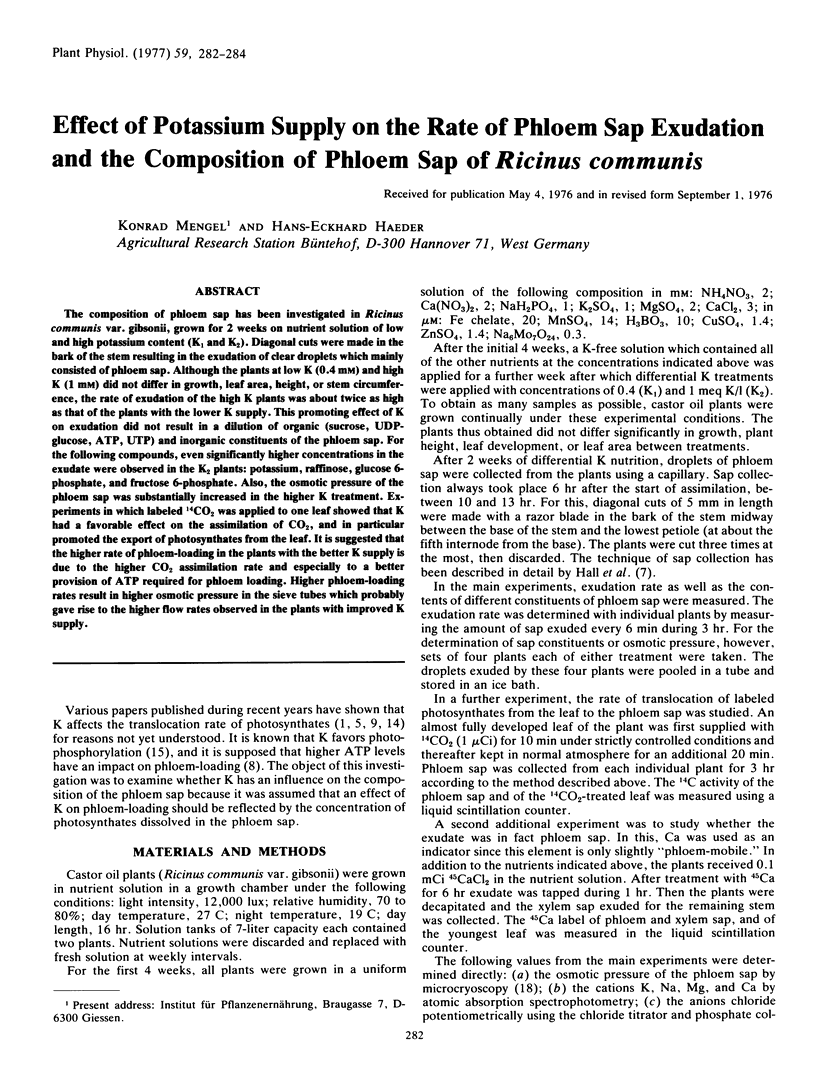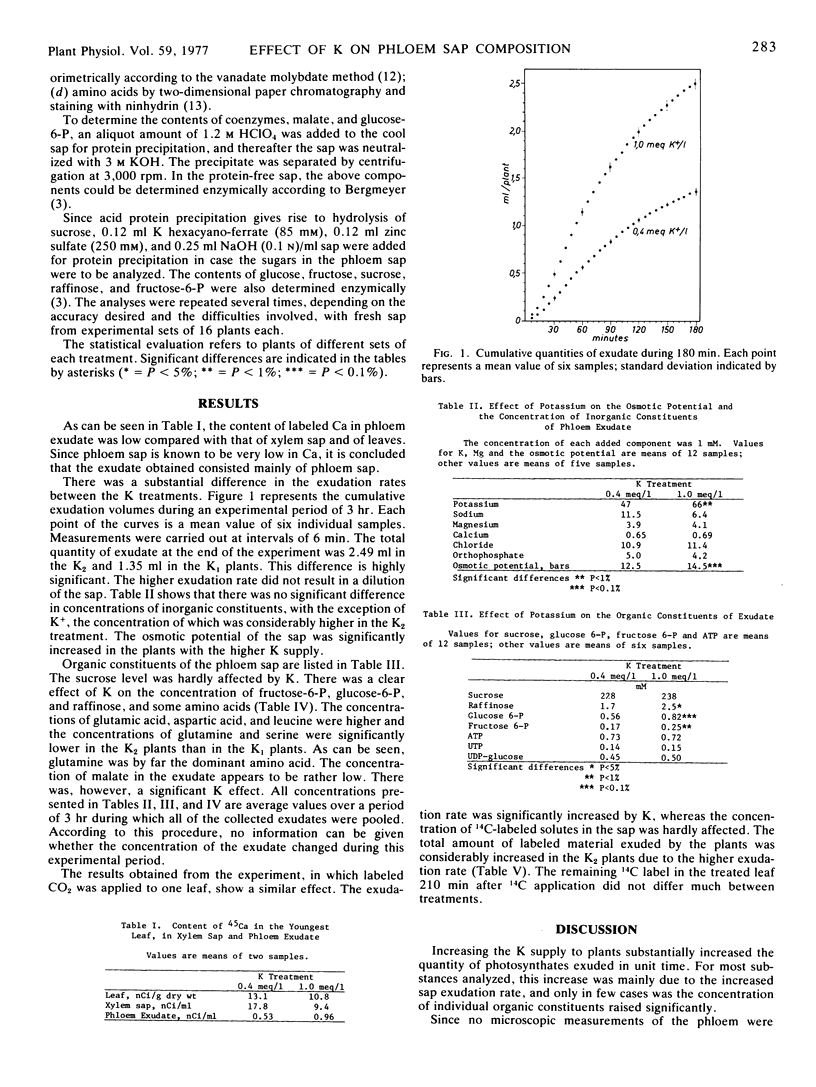Abstract
The composition of phloem sap has been investigated in Ricinus communis var. gibsonii, grown for 2 weeks on nutrient solution of low and high potassium content (K1 and K2). Diagonal cuts were made in the bark of the stem resulting in the exudation of clear droplets which mainly consisted of phloem sap. Although the plants at low K (0.4 mm) and high K (1 mm) did not differ in growth, leaf area, height, or stem circumference, the rate of exudation of the high K plants was about twice as high as that of the plants with the lower K supply. This promoting effect of K on exudation did not result in a dilution of organic (sucrose, UDP-glucose, ATP, UTP) and inorganic constituents of the phloem sap. For the following compounds, even significantly higher concentrations in the exudate were observed in the K2 plants: potassium, raffinose, glucose 6-phosphate, and fructose 6-phosphate. Also, the osmotic pressure of the phloem sap was substantially increased in the higher K treatment. Experiments in which labeled 14CO2 was applied to one leaf showed that K had a favorable effect on the assimilation of CO2, and in particular promoted the export of photosynthates from the leaf. It is suggested that the higher rate of phloem-loading in the plants with the better K supply is due to the higher CO2 assimilation rate and especially to a better provision of ATP required for phloem loading. Higher phloem-loading rates result in higher osmotic pressure in the sieve tubes which probably gave rise to the higher flow rates observed in the plants with improved K supply.
Full text
PDF


Selected References
These references are in PubMed. This may not be the complete list of references from this article.
- Haeder H. E., Mengel K., Forster H. The effect of potassium on translocation of photosynthates and yield pattern of potato plants. J Sci Food Agric. 1973 Dec;24(12):1479–1487. doi: 10.1002/jsfa.2740241203. [DOI] [PubMed] [Google Scholar]
- Hartt C. E. Effect of Potassium Deficiency upon Translocation of C in Detached Blades of Sugarcane. Plant Physiol. 1970 Feb;45(2):183–187. doi: 10.1104/pp.45.2.183. [DOI] [PMC free article] [PubMed] [Google Scholar]
- Hartt C. E. Effect of potassium deficiency upon translocation of C in attached blades and entire plants of sugarcane. Plant Physiol. 1969 Oct;44(10):1461–1469. doi: 10.1104/pp.44.10.1461. [DOI] [PMC free article] [PubMed] [Google Scholar]
- Hartt C. E. Light and Translocation of C in Detached Blades of Sugarcane. Plant Physiol. 1965 Jul;40(4):718–724. doi: 10.1104/pp.40.4.718. [DOI] [PMC free article] [PubMed] [Google Scholar]
- Sovonick S. A., Geiger D. R., Fellows R. J. Evidence for active Phloem loading in the minor veins of sugar beet. Plant Physiol. 1974 Dec;54(6):886–891. doi: 10.1104/pp.54.6.886. [DOI] [PMC free article] [PubMed] [Google Scholar]


